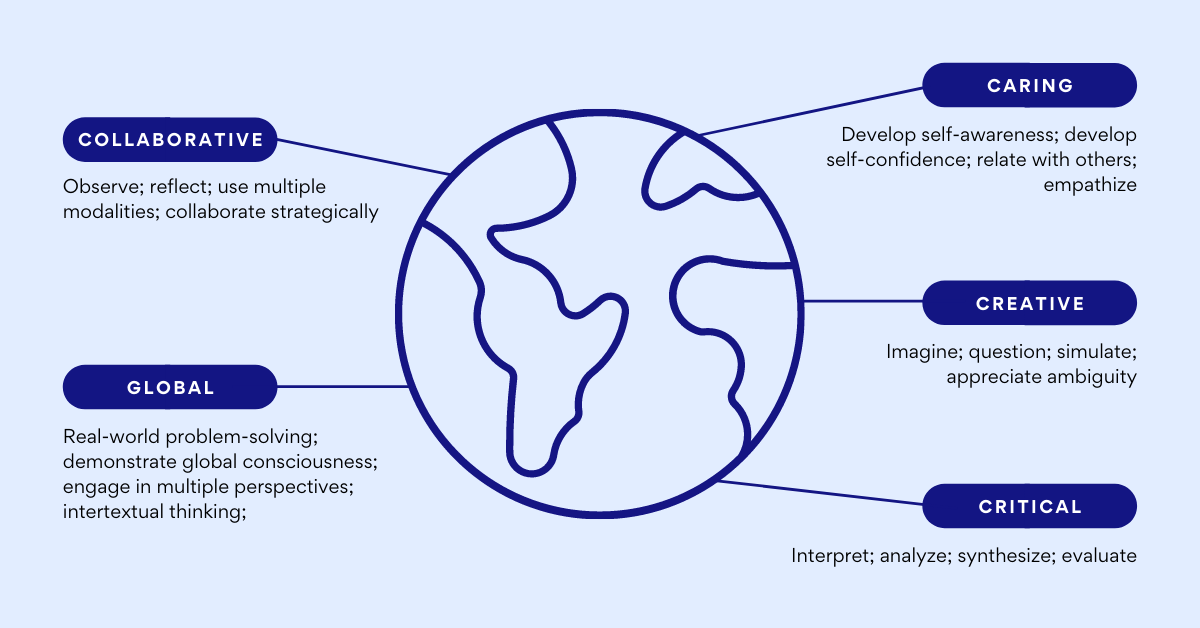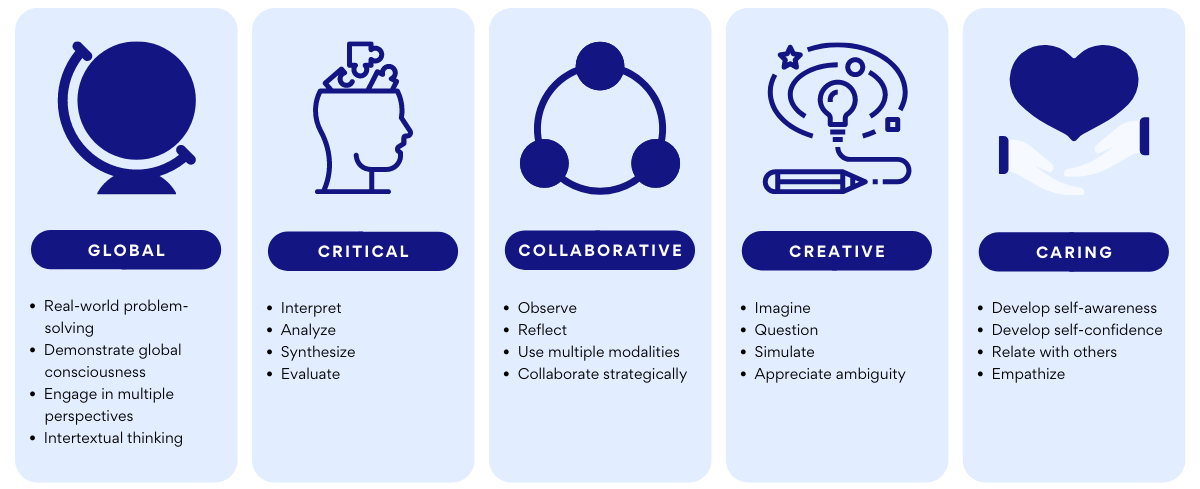|
Breathe new life into book clubs and place students at the center of their reading experience.
Time moves forward, as it always does. We can take this time to reflect on lessons learned when we unexpectedly and quickly shifted from teaching in the classroom, to teaching remotely, and then into a next normal of blended in-person and virtual learning spaces. One big takeaway from this time of critical reflection is that we aren’t starting with a blank page. Whatever the season, we can adapt tools we already have to meet the challenges we’re facing.
Breathing new life into book clubs
New tools can breathe new life into our planning and our teaching, and creating a new tool doesn’t need to be done from scratch. By connecting Ten Tips for Successful Book Clubs with our Global Mindset Framework, we can quickly create a new resource that integrates teaching 21st century skills into each reading opportunity we plan for our students. Book clubs offer many benefits to student readers, including:
A successful book club for your students will:
Understanding the Global Mindset Framework
Now that we’ve framed some of the characteristics of book clubs, we can connect each facet to our Global Mindset Framework. This will help us streamline our work when planning for our next book club iteration, or beginning a book club community with our students.
The Global Mindset Framework is the articulation of 21st century skills students need to navigate their present and their future, sorted into five categories of capacities: caring, collaborative, creative, critical, and global. The framework addresses key questions that teachers and school leaders struggle with as they attempt to make key concepts relevant to children in a changing world. To understand the Global Mindset Framework, we can look to the Global Learning Alliance (GLA). The GLA is the outgrowth of our groundbreaking research on the features and practices surrounding 21st century teaching and learning. It has evolved from the seeds of a research project and is now a consortium of schools and universities around the world dedicated to understanding, defining, applying, and sharing the principles and practices of a world-class education within a wide range of educational contexts.
21st century capacities
Global capacity: The capacity for students to step outside the confines of their own familiar social world to understand distant realities in order to engage productively with the world. Critical capacity: The capacity for students to develop their full critical cognitive capacities in order to be discerning and informed citizens of the world. Collaborative capacity: The capacity for students to develop habits of observation, reflection, and collaboration, and to be able to communicate in multiple modalities such as through images, words, sounds, gestures, or an integration of these modes in order to actively contribute to various discourses in the world. Creative capacity: The capacity for students to follow their curiosity by questioning or imagining in order to contribute positive improvements or inventions to their world. Caring capacity: The capacity for students to explore compassion, empathy, and self-awareness in order to develop caring partnerships with themselves, their communities, countries, and world.
Activating 21st century skills
Using the template below, we can imagine how we might combine various capacities from the Global Mindset Framework with our tips for success to generate a profile of a book club that integrates 21st century skills into student learning. We want to keep moving our teaching forward to meet the needs of today’s students, but we don’t often feel we have the time we need to recreate our plans. By layering the Global Mindset Framework over our book club planning, we can revise what we’ve already got going for us instead of starting from a blank page.
Connecting skills to next steps
Using the template above, we can customize our profile to fit a specific book — in this case, we'll use Malala Yousafzai's I Am Malala: How One Girl Stood Up for Education and Changed the World. In this model, we start with our to-do list; we imagine some of our options, and what we need to collect to complete our plan.
The task before us all is to educate students today for the world they’re poised to lead tomorrow, and as we recognize that we can no longer sustain a 20th century in a 21st century world, we must remain flexible in order to meet the dynamic needs of our students. As we look for ways to build upon the expertise and techniques already alive in our classrooms, we can easily create opportunities for students to build 21st century skills, shifting from teacher-centered instruction to an environment that puts students at the center of their reading and writing experiences.
|
|
The Center for Professional Education of Teachers (CPET) at Teachers College, Columbia University is committed to making excellent and equitable education accessible worldwide. CPET unites theory and practice to promote transformational change. We design innovative projects, cultivate sustainable partnerships, and conduct research through direct and online services to youth and educators. Grounded in adult learning theories, our six core principles structure our customized approach and expand the capacities of educators around the world.
|
ABOUT US
525 West 120th Street, Box 182 New York, NY 10027 416 Zankel Ph: (212) 678-3161 [email protected] Our Team Career Opportunities |
RESOURCES
Professional Articles Ready-to-Use Resources Teaching Today Podcast Upcoming PD Opportunities |
COACHING SERVICES
Custom Coaching Global Learning Alliance Literacy Unbound New Teacher Network Student Press Initiative |



























